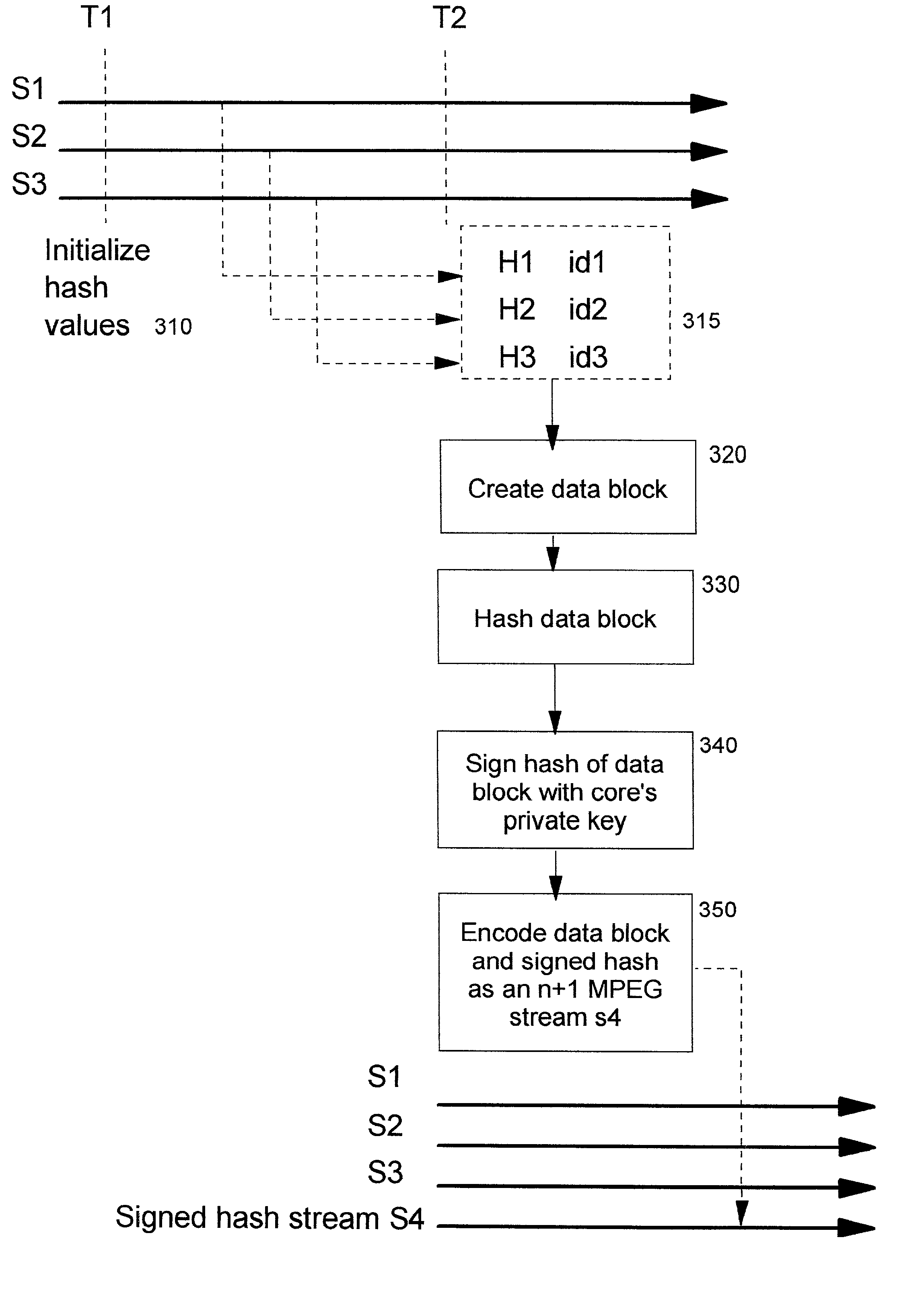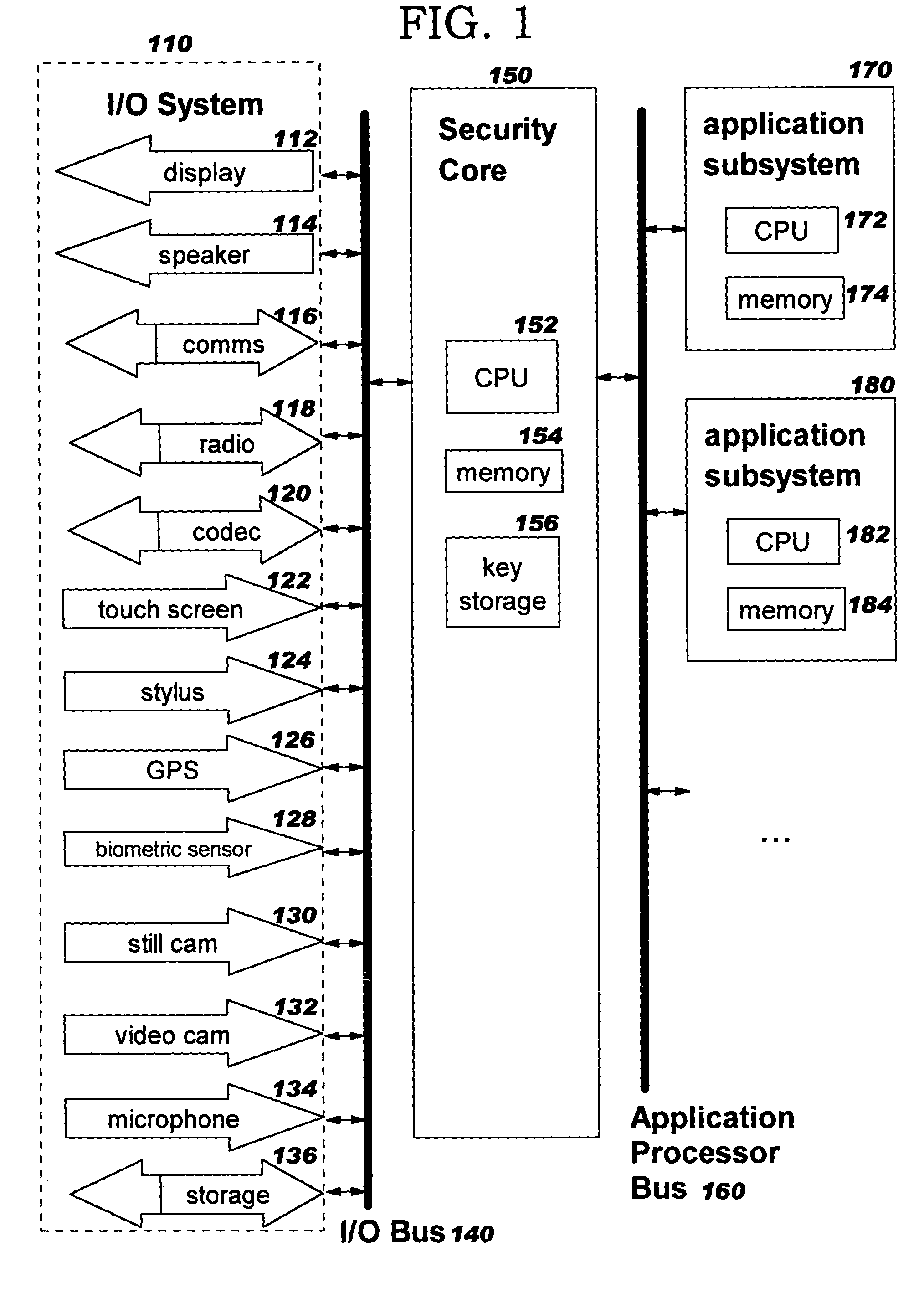Technique for digitally notarizing a collection of data streams
a technology of digital notarization and data streams, applied in the field of computer systems, can solve the problems of large volume of devices, small size, weight, etc., and achieve the effect of improving security
- Summary
- Abstract
- Description
- Claims
- Application Information
AI Technical Summary
Benefits of technology
Problems solved by technology
Method used
Image
Examples
Embodiment Construction
[0044]The present invention improves the security of wireless pervasive devices. Central to the invention is a comprehensive, top-down design that focuses first and foremost on security through a security core, as shown at element 150 in FIG. 1. To this secure core, hardware and / or software support for one or more types of personal application functionality can be selectively and dynamically added, resulting in a secure multi-function pervasive device.
[0045]The preferred embodiments of the present invention use a multi-processor architecture in which the master processor is a security core 150 which comprises a central processing unit (CPU) 152, a memory 154, and a protected area 156 for storing cryptographic keys. Preferably, a technique such as that defined in commonly-assigned U.S. patent (Ser. No. 09 / 614,982) or U.S. patent (Ser. No. 09 / 614,983), which are entitled “Methods, Systems and Computer Program Products for Secure Firmware Updates” and “Methods, Systems and Computer Pro...
PUM
 Login to View More
Login to View More Abstract
Description
Claims
Application Information
 Login to View More
Login to View More - R&D
- Intellectual Property
- Life Sciences
- Materials
- Tech Scout
- Unparalleled Data Quality
- Higher Quality Content
- 60% Fewer Hallucinations
Browse by: Latest US Patents, China's latest patents, Technical Efficacy Thesaurus, Application Domain, Technology Topic, Popular Technical Reports.
© 2025 PatSnap. All rights reserved.Legal|Privacy policy|Modern Slavery Act Transparency Statement|Sitemap|About US| Contact US: help@patsnap.com



